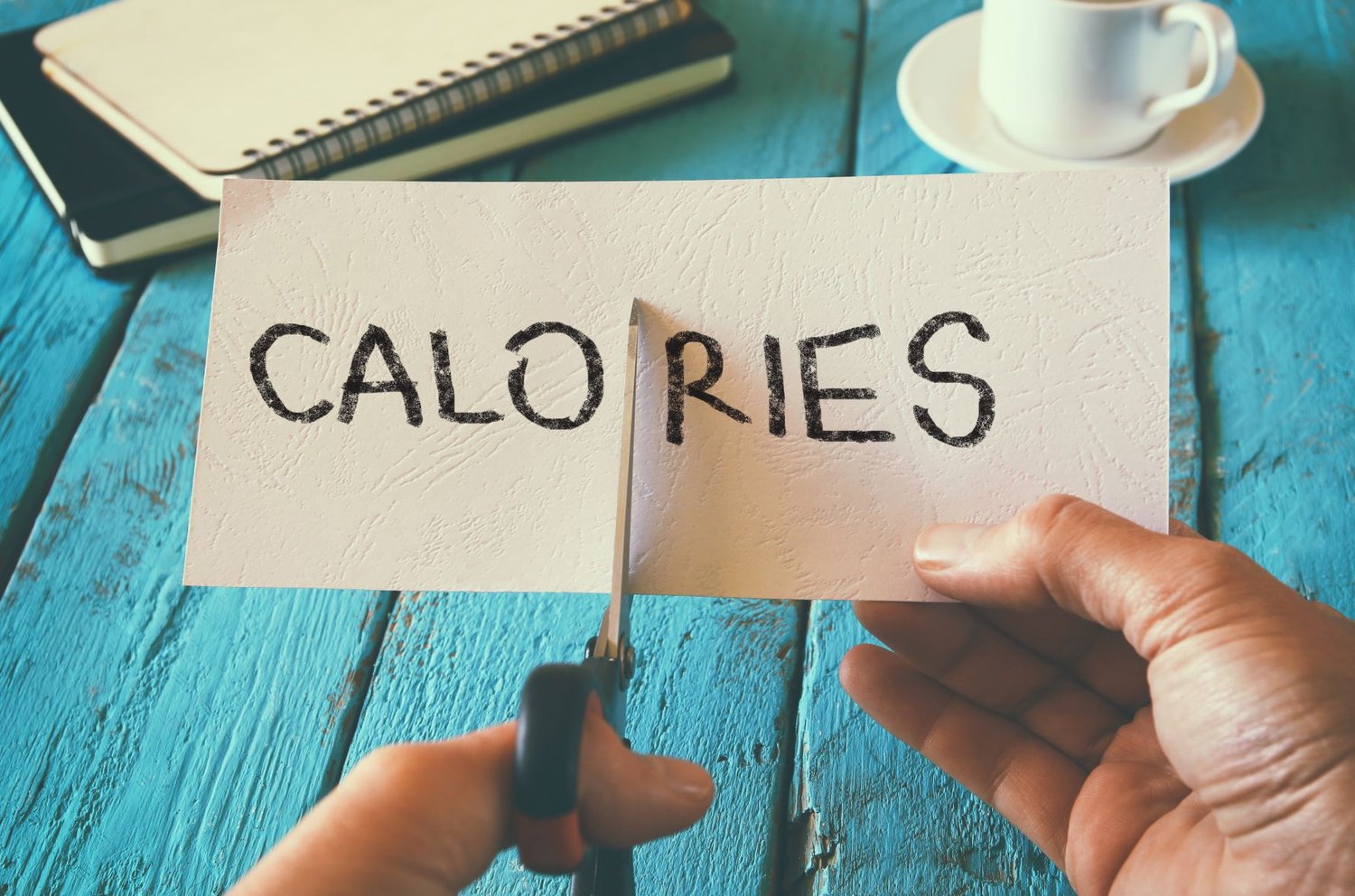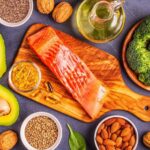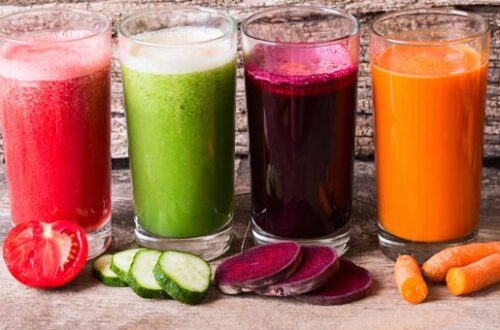How To Lose Weight Without Counting Calories
Many individuals understand the basic principle that in order to maintain or lose weight, the number of calories consumed should ideally be equal to or less than the number of calories burned.
While this guideline holds true for a significant number of people, it does not imply that one must meticulously track every single calorie ingested.
Being mindful of calories when making dietary choices can certainly be advantageous, but the process of counting calories is often neither enjoyable nor necessary. There are numerous alternative strategies that can help you achieve a leaner physique without the need to obsessively monitor calorie intake.
To assist you in this endeavor, we’ve compiled a list of our top actionable tips for losing weight and achieving a leaner body without the hassle of calorie counting.
1 – Emphasize Foods You Can Add Rather Than Those You Should Limit.
Many diets focus heavily on restriction, but a more effective approach to balanced eating is to concentrate on the nutritious foods you can incorporate into your weight loss meal plan.
Instead of fixating on what you need to eliminate—like your favorite sweets or snacks—shift your mindset to consider which healthy options you can enjoy.
Are you curious about trying Brussels sprouts? Find a delicious recipe and have fun experimenting with it. Want to incorporate more beans into your diet? Explore using them in dips, soups, or even baked goods.
You may discover that when you approach meal planning from a perspective of addition rather than subtraction, the foods you’re limiting won’t be missed as much as you thought.
2 – Minimize Distractions While Eating.
In today’s fast-paced world, it’s easy to eat while distracted by various stimuli around us. However, practicing mindful eating by focusing solely on your meal can significantly aid in weight loss. When you eliminate distractions, you’ll be more in tune with your body’s signals, making it easier to recognize when you’re full and to fully enjoy your food.
Research indicates that mindful eating can contribute to weight loss and maintenance without the need for calorie counting.
If you find yourself eating lunch during a busy workday, take a brief 10-minute break and enjoy your meal in a different setting away from your desk. At home, consider skipping the TV and putting down your phone.
You might even leave your phone in another room or silence notifications while you eat to avoid the temptation to check them.
3 – Prioritize Protein in Your Meals
Protein is renowned for its ability to keep you feeling full and satisfied, making it an essential component of any weight loss strategy. Incorporating protein into every meal can be especially beneficial, and it’s even more effective when you start with protein-rich foods.
By consuming protein at the beginning of a meal, you may find that you eat less overall compared to starting with less satiating options.
Additionally, research suggests that eating protein (along with non-starchy vegetables) before carbohydrates can help lower post-meal blood sugar levels, which is particularly important for individuals with type 2 diabetes.
4 – Stay Hydrated with Enough Water
Drinking sufficient water is vital not only after a workout or on a hot day, but also as a fundamental aspect of a healthy lifestyle, especially when your goal is weight loss.
Proper hydration can help you distinguish between thirst and hunger, reducing the likelihood of overeating. Water also aids digestion, helps fiber move through your system, and may even enhance your metabolism.
Aim to drink at least eight cups of water daily. Keeping a reusable water bottle nearby and refilling it frequently can encourage you to stay hydrated. If plain water doesn’t appeal to you, consider adding a splash of juice, some frozen fruit, or fresh herbs for added flavor. Additionally, fruits and vegetables—such as lettuce, watermelon, and tomatoes—can contribute to your daily hydration needs.
5 – Limit Your Intake of Heavily Processed Foods
Heavily processed foods, often referred to as ultra-processed foods (UPFs), have been associated with negative health outcomes. These include items like chips, sodas, energy drinks, candy, ice cream, hot dogs, and sugary cereals.
In contrast, whole or minimally processed foods—such as fruits, vegetables, lean proteins, whole grains, and healthy fats—offer numerous health benefits and should form the cornerstone of a weight loss diet.
If your current diet includes a lot of heavily processed foods, the idea of cutting them all out at once can be daunting. To make the transition more manageable, start by swapping out just one processed item for a healthier alternative.
For instance, replace sugary cereal with a bowl of steel-cut oatmeal topped with fresh fruit and sliced almonds. If you find it challenging to improve your diet on your own, consider exploring meal delivery or meal prep services to simplify the process.
6 – Create Barriers to Keep Trigger Foods Away
It’s common to find yourself eating unhealthy foods just because they’re available at home. You might know this feeling well if you’ve ever had leftover Halloween candy around! Foods that often lead to overeating—like candy, ice cream, cookies, chips, and other snacks—are called “trigger foods.”
One effective way to help with weight loss is to create barriers that make it harder for you to reach these trigger foods. Start by not keeping these items in your house unless they are for a special occasion where you know they will be consumed.
If you crave a specific food and want to enjoy it, think about portion sizes. Instead of buying a whole carton of ice cream, consider going to an ice cream shop and getting just one scoop. Enjoy your treat, then move on without the temptation of having more at home.
7 – Stay Active!
What you eat plays a big role in your weight, but don’t forget about the importance of exercise. Being more active can help you get leaner without stressing over calorie counts. Combining exercise with healthy eating usually works better than focusing on just one of them.
To increase your activity level, look for opportunities to exercise throughout your day. Even taking a quick 10-minute walk during your lunch break can make a difference. You can also choose the stairs instead of the elevator, park further away from your destination, or have walking meetings instead of sitting down.
8 – Consider Cutting Out Alcohol
Reducing alcohol consumption, or even avoiding it altogether, can significantly aid in weight loss and maintenance. Many people focus on cutting calories from food and forget about the calories in alcoholic drinks, but cutting back on booze can be just as effective in helping you slim down.
If you drink alcohol regularly—like every day or a few times a week—start by eliminating one drinking day or limiting yourself to just one drink per day. If you want something refreshing but don’t want a second alcoholic drink, try a mocktail or flavored sparkling water instead.
Gradually work towards having alcohol just once a week or once a month, or switch to non-alcoholic beverages completely.
9 – Reduce Takeout Meals
Restaurant meals can often be high in calories and loaded with unhealthy fats and sodium. By cooking more meals at home using fresh, nutritious ingredients instead of relying on takeout, you can work towards weight loss without constantly thinking about calories.
Set aside some time each week to look up healthy recipes online and choose something new to try, even if it’s just one meal a week. When you do decide to order takeout, opt for meals that are rich in vegetables, lean proteins, and whole grains rather than refined carbohydrates when possible. If you need help with planning healthy meals at home, consider trying one of our meal plans!
10 – Rethink Your Snacks
Snacking between meals isn’t necessarily bad for weight loss, but it greatly depends on what you choose to eat. Many people think of snacks as chips, cookies, or candy bars, but snack time can be a great opportunity to enjoy nutritious foods.
Instead of grabbing an afternoon Snickers bar, consider swapping it for carrots and hummus. This small change can significantly contribute to your weight loss goals. Aim for snacks that include a source of protein and fiber.
Some good examples are hard-boiled eggs with baby carrots, an apple with plain Greek yogurt and berries, or raw nuts with dried apricots.
Other Tips on How to Lose Weight without counting calories
Understand Your Hunger and Fullness Signals
Your energy needs can vary from day to day. Factors such as how active you are, how well you’ve slept, your recent eating habits, and even your menstrual cycle can all influence your hunger levels and how much energy your body requires.
Being aware of your hunger and fullness cues allows you to adjust your eating habits to meet your body’s changing needs. This awareness can help you consume enough food without going overboard, creating a flexible eating approach that works with your body and lifestyle.
This awareness is especially crucial if you’re aiming to lose weight. If you eat when you’re extremely hungry, you may end up eating too quickly and consuming more than you need. Likewise, if you struggle to stop eating when you feel comfortably full, maintaining a calorie deficit will become challenging.
To start, pay attention to your own hunger and fullness cues and make an effort to honor them. If you’re unsure what these cues feel or look like for you, consider keeping a journal to help you identify and understand them better!
Don’t Skip Breakfast
While intermittent fasting has become quite popular, I don’t typically recommend it, especially if it means missing breakfast. For many people, skipping this important meal can lead to increased hunger later in the day, resulting in overeating when they finally sit down to eat. This not only feels uncomfortable but can also impede your weight loss efforts.
If you’re not already incorporating a balanced breakfast into your morning routine, consider adding one that includes plenty of protein and fiber.
If you struggle to find time in the morning, quick and easy options like meal-prepped breakfast sandwiches, overnight oats, or a simple bowl of yogurt with berries can help you get started.
Include Plenty of Fruits and Vegetables
Incorporating more fruits and vegetables into your diet provides a wealth of vitamins, minerals, and antioxidants. Additionally, they add fiber, water, and volume to your meals, creating larger portions that help you feel full while consuming fewer calories. This can be incredibly beneficial as you work towards your weight loss goals.
That said, it’s important not to focus solely on volume. I’m not suggesting you eat three watermelons for breakfast to curb your hunger! While fruits and veggies are essential for weight loss, it’s also important to include protein, starchy carbohydrates, and healthy fats in your diet.
If salads aren’t your favorite, consider alternatives like fruit smoothies (banana and peach, anyone?), veggie-packed soups, or colorful stir-fries. Find ways to enjoy produce that you genuinely like!
Track Your Progress
Monitoring your habits and progress can significantly enhance your ability to stick to your weight loss goals. This practice, known as self-monitoring, can take many forms.
There are numerous ways to track your progress beyond just weighing yourself. If using the scale or taking progress photos feels more harmful than helpful, don’t worry—you have plenty of alternatives.
Here are some effective ways to track your behaviors and progress in weight loss:
- Food Journal: Keep a record of what you eat to help you stay aware of your eating habits.
- Weekly Goal Setting: Set small, achievable goals each week to keep you motivated and on track.
- Minutes of Movement: Track how many minutes you are active each week to encourage regular exercise.
- Accountability Buddy: Find a friend or family member to share your goals with and keep each other accountable.
- Clothing Fit: Pay attention to how your clothes feel to gauge changes in your body.
- Vegetable Servings: Count the number of servings of vegetables you eat each week to encourage healthier eating.
Monitoring these various metrics can help you notice changes in your body composition. For example, if you’re building muscle (which is highly beneficial), you might lose fat without seeing a change in weight. If you only rely on the scale, you might miss this positive shift.
However, by paying attention to how your jeans fit, you can celebrate your progress and feel good about your achievements!
What are the pros and cons of a vegan diet?
How Do You Feel When Your Sugar Is Low?

A graduate of Computer Science and Information Management Technology. Diploma – Caregiving, Certificates – Dementia and Diabetes Awareness and Management. A researcher, blogger, songwriter, singer and acoustic guitarist. Born in an environment where natural talents such as healing are imparted at our natural birth. This natural talents of healing is the result of our genetic inheritance and the training from family environment.












